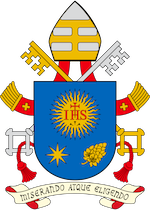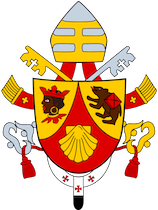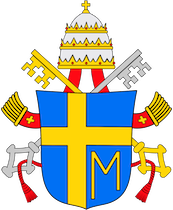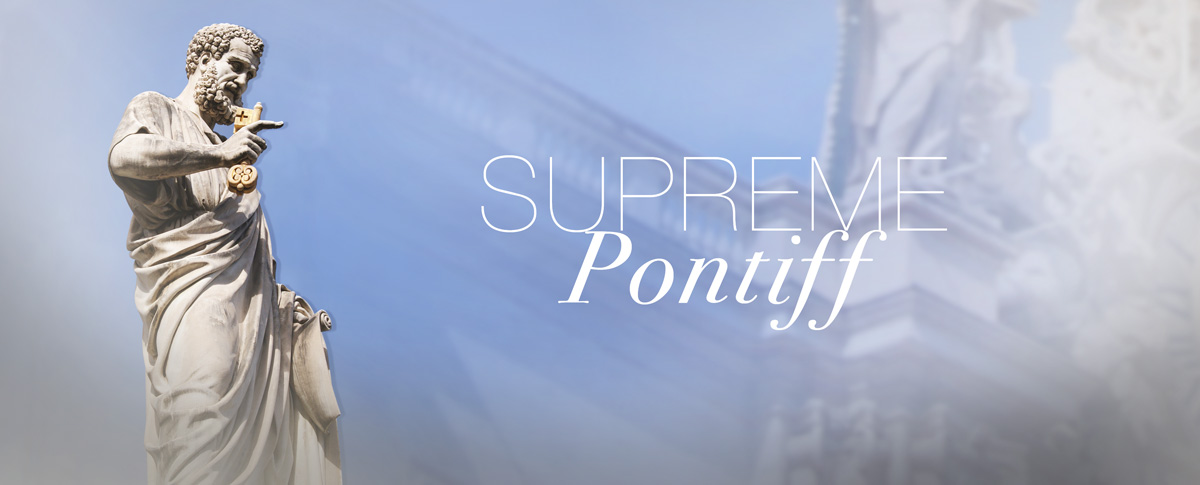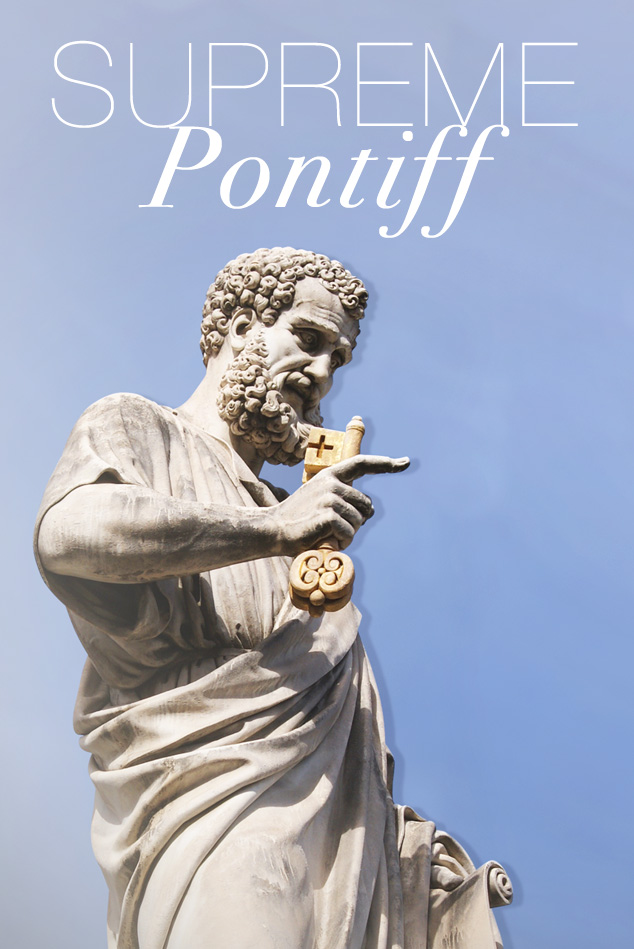The Messiah is the Vizier of the great King, the Eternal Father, bringing to earth the treasure of Redemption from the Storehouse of the Father’s mercy. Peter is the Messiah’s Vizier, the Vicar of Christ, who through his successors in every age is head of the Church on earth which distributes those treasures in the name of the Lord. (Isaiah 22:22, Rev 3:7, Mt 16:19) to the other apostles is given the power to bind and to loose, but not the supreme power of the keys (Mt 18:18).
To these general symbols of the papacy the Pope will add devices and/or text which are individual to himself. Pope John Paul II, for example, had the blue field, Mary’s color, with the Cross of Our Lord and the M of Mary under the Cross, showing the importance of Jesus and Mary in his personal spirituality.
